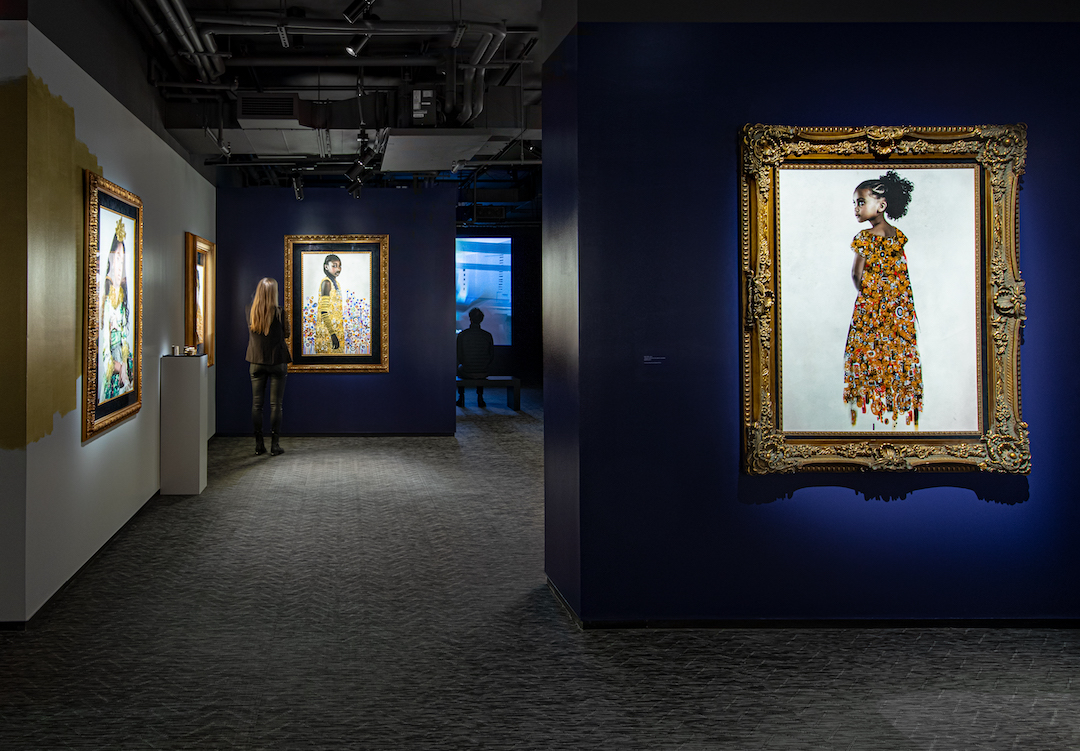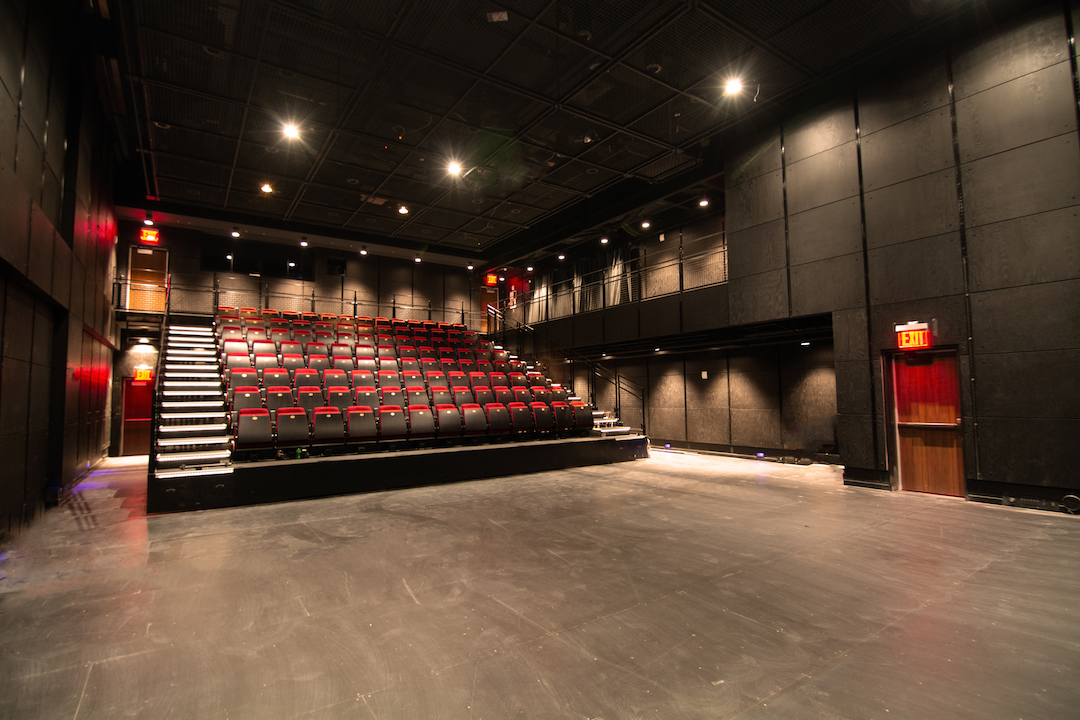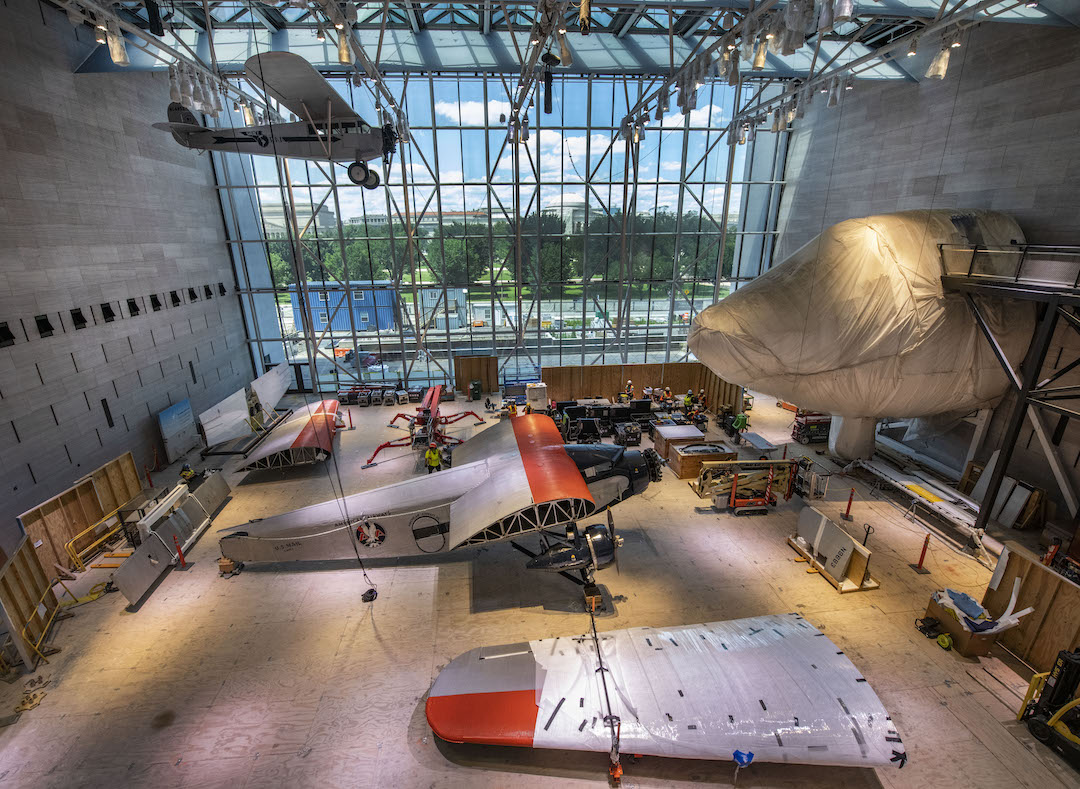One of Clark Construction Group’s cultural projects is the Orange County (Calif.) Museum of Art’s new three-story, 53,000-sf home for the Segerstrom Center for the Arts in Costa Mesa. Throughout the construction process for this $73 million project, Clark has facilitated tours for stakeholders and potential donors that recently included a breakfast on the jobsite.
Efforts like this to raise capital for cultural buildings became necessary during the COVID-19 health crisis. “For some cultural institutions, the pandemic has created a more challenging fundraising environment,” says Jared Oldroyd, Senior Vice President at Clark, who has been the executive in charge of several of the firm’s cultural contracts.
Oldroyd, like other AEC sources contacted for this article, have seen their cultural projects bounce back to life over the past 12 months. But the pandemic’s impact is likely to be longer-lasting when it comes to new construction and upgrading existing buildings to meet new air-quality and social-distancing norms.
For example, LeChase Construction is doing more with imaging technologies to communicate remotely with stakeholders, says its Vice President Lee Sommerman. That includes virtual real-time tours, increased use of drone imagery, and systems that upload images captured as a project team member walks the site.
As part of the OMA-led expansion of the New Museum in New York City, the architecture firm Cooper Robertson did extensive research into indoor air quality and visitor-staff circulation to ultimately determine that the building’s existing HVAC system met or exceeded guidelines set by the Centers for Disease Control and Prevention, says Erin Flynn, RA, LEED AP, Partner and Director of Architecture.

Flynn adds that another COVID-19 protocol now finds more cultural centers like museums enabling patrons to access information via their own mobile devices. Clark’s Oldroyd also sees a push by cultural centers toward interactive and immersive displays that incorporate more touchless elements, right down to the stylus that each visitor receives from the National Museum of the U.S. Army in Fort Belvoir, Va., one of the new constructions Clark completed in 2020.
Oldroyd points out that 75 percent of the overall exhibit area in the Museum of the Bible in Washington, D.C., features interactive and immersive experiences. To support such projects, his firm has been able to leverage the in-house expertise of its S2N Technology Group.
Fotografiska New York, a photography museum that’s an adaptive reuse of the 1894 Churches Mission House, creates a space for visitors to meet, eat, drink, and experience photography through an immersive series of rotating exhibits. Natural light was intentionally excluded from the gallery floors through the addition of interior walls, so that ambient light can provide a sense of intimacy with the artwork, explains Theresa M. Genovese, AIA, LEED AP, a Principal with CetraRuddy Architecture, which provided architecture and interior design services for this six-story, 45,000-sf project.
Genovese observes that, even before the COVID-19 outbreak and spread, some cultural institutions were investigating the so-called “distributed museum model,” which refers to pop-up or temporary exhibits or events that expand the reach of the facility and bring cultural programming to other physical or virtual spaces.
In that same vein, in markets where climate allows, some cultural institutions are blurring the boundaries between indoor and outdoor spaces. “Opaque boxes are giving way to transparency and connection to the external environment,” says David Herd, Managing Director of Buro Happold’s California Region.
RENOVATIONS IN DEMAND
AEC firms tell BD+C that they’ve seen renewed client interest for a variety of cultural and artistic venues. LeChase Construction has seen the greatest demand for performing arts centers. The firm, says Sommerman, was part of a $9.5 million historic renovation of the 32,336-sf Bent’s Opera House in Medina, N.Y. The renovation, designed by Kideney Architects, required extensive structural work on a three-story, 150-year-old building that had been vacant since 2010. The result is a mixed-use facility that, aside from the opera house on the third floor, includes a farm-to-table restaurant and a boutique hotel.
Renovations and expansions of cultural centers are also prevalent. Among Cooper Robertson’s recent cultural expansions are The Studio Museum of Harlem (designed in collaboration with Adjaye Associates), Albert-Knox Art Gallery in Buffalo, N.Y. (led by OMA), and the Rock & Roll Hall of Fame in Cleveland (led by PAU).
In Washington, D.C., a joint venture that includes Clark, Smoot, and Consigli has been leading the Smithsonian Institution’s largest renovation to date: the National Air & Space Museum revitalization, a multi-phase project that involves deconstructing the museum to its core structural elements, upgrading the structure to meet modern codes, and installing a stone-clad curtain wall, entrance canopy, MEP system, and finishes. Phase 1 should be completed by Spring 2022.
Pavarini McGovern, which is part of the STO Building Group, is nearing completion of the Davis Brody Bond-designed Irish Arts Center (IAC), a five-story expansion of what had been a former tire garage in New York’s Hell’s Kitchen neighborhood that adjoined the tenement building IAC had occupied since 1972. The new building requires a complex MEP system whose energy optimization “is a testament to the design,” says Mark Hildreth, Pavarini McGovern’s Project Manager.

Several sources confirm that their cultural clients are seeking energy efficient solutions for their projects. Shawmut Design and Construction’s recent completion of the Philip Roth Personal Library at Newark (N.J.) Public Library, designed with Ann Beha Architects and C&G Partners, added new MEP and fire protection systems as well as humidity and temperature controls. This 8,860-sf project also features a new HVAC system for Centennial Hall, the building’s lecture hall and event space.
Studio Ma’s recent cultural projects include the Museum of the West in Scottsdale, Ariz., whose tilt-up construction and flexible floor plan helped reduce its overall cost to half that of similar buildings. Passive design principles, such as self-shading the building from sun and heat gain by use of overhanging metal scrims on the second floor, lower the museum’s energy costs by 38 percent compared to peer buildings, says Christiana Moss, FAIA, Studio Ma’s Co-founder and Principal. The building recycles water for humidification, and condensate is diverted to a runnel that connects to a bioswale that can also handle up to 42 gallons per hour of roof rain runoff. These sustainability measures allow the museum to operate with only 45 percent of the water used by peer facilities.
Connecting the cultural building to its community is also an essential, and provides more opportunities for outdoor programming, says Flynn of Cooper Robertson. In Arizona, Studio Ma’s design of the Native American Cultural Center is informed by an Indigenous Planning Process that involved representatives from 22 Arizona tribal communities.
Related Stories
| Aug 11, 2010
Gold Award: Eisenhower Theater, Washington, D.C.
The Eisenhower Theater in the John F. Kennedy Center for the Performing Arts in Washington, D.C., opened in 1971. By the turn of the century, after three-plus decades of heavy use, the 1,142-seat box-within-a-box playhouse on the Potomac was starting to show its age. Poor lighting and tired, worn finishes created a gloomy atmosphere.
| Aug 11, 2010
Giants 300 University Report
University construction spending is 13% higher than a year ago—mostly for residence halls and infrastructure on public campuses—and is expected to slip less than 5% over the next two years. However, the value of starts dropped about 10% in recent months and will not return to the 2007–08 peak for about two years.
| Aug 11, 2010
Reaching For the Stars
The famed Griffith Observatory, located in the heart of the Hollywood hills, receives close to two million visitors every year and has appeared in such films as the classic “Rebel Without a Cause” and the not-so-classic “Charlie's Angels: Full Throttle.” Complete with a solar telescope and a 12-inch refracting telescope, multiple scientific exhibits, and one of the world...
| Aug 11, 2010
The Art of Reconstruction
The Old Patent Office Building in Washington, D.C., completed in 1867, houses two Smithsonian Institution museums—the National Portrait Gallery and the American Art Museum. Collections include portraits of all U.S. presidents, along with paintings, sculptures, prints, and drawings of numerous historic figures from American history, and the works of more than 7,000 American artists.
| Aug 11, 2010
Silver Award: Pere Marquette Depot Bay City, Mich.
For 38 years, the Pere Marquette Depot sat boarded up, broken down, and fire damaged. The Prairie-style building, with its distinctive orange iron-brick walls, was once the elegant Bay City, Mich., train station. The facility, which opened in 1904, served the Flint and Pere Marquette Railroad Company when the area was the epicenter of lumber processing for the shipbuilding and kit homebuilding ...
| Aug 11, 2010
Bowing to Tradition
As the home to Harvard's Hasty Pudding Theatricals—the oldest theatrical company in the nation—12 Holyoke Street had its share of opening nights. In April 2002, however, the Faculty of Arts and Sciences decided the 1888 Georgian Revival building no longer met the needs of the company and hired Boston-based architect Leers Weinzapfel Associates to design a more contemporary facility.
| Aug 11, 2010
Silver Award: Please Touch Museum at Memorial Hall Philadelphia, Pa.
Built in 1875 to serve as the art gallery for the Centennial International Exhibition in Fairmount Park, Memorial Hall stands as one of the great civic structures in Philadelphia. The neoclassical building, designed by Fairmount Park Commission engineer Hermann J. Schwarzmann, was one of the first buildings in America to be designed according to the principles of the Beaux Arts movement.
| Aug 11, 2010
Financial Wizardry Builds a Community
At 69 square miles, Vineland is New Jersey's largest city, at least in geographic area, and it has a rich history. It was established in 1861 as a planned community (well before there were such things) by the utopian Charles Landis. It was in Vineland that Dr. Thomas Welch found a way to preserve grape juice without fermenting it, creating a wine substitute for church use (the town was dry).
| Aug 11, 2010
Team Tames Impossible Site
Rensselaer Polytechnic Institute, the nation's oldest technology university, has long prided itself on its state-of-the-art design and engineering curriculum. Several years ago, to call attention to its equally estimable media and performing arts programs, RPI commissioned British architect Sir Nicholas Grimshaw to design the Curtis R.
| Aug 11, 2010
Silver Award: Hanna Theatre, Cleveland, Ohio
Between February 1921 and November 1922 five theaters opened along a short stretch of Euclid Avenue in downtown Cleveland, all of them presenting silent movies, legitimate theater, and vaudeville. During the Great Depression, several of the theaters in the unofficial “Playhouse Square” converted to movie theaters, but they all fell into a death spiral after World War II.







